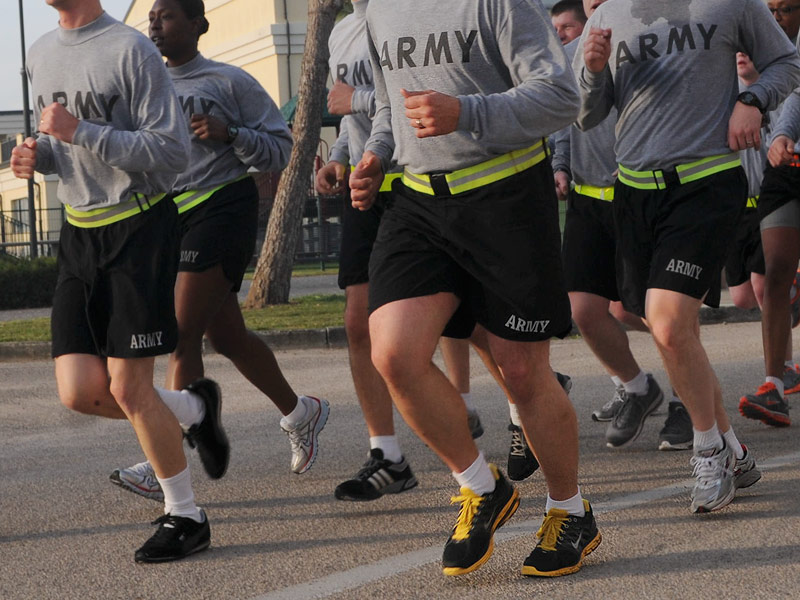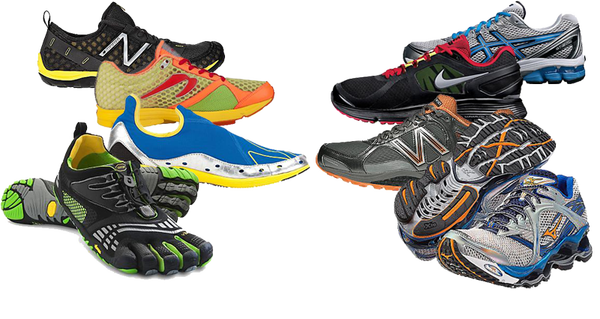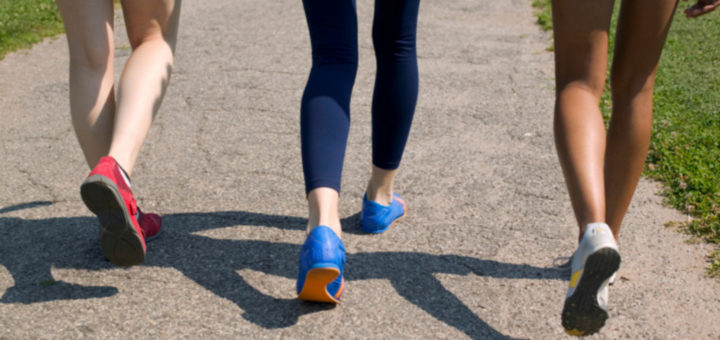Similar risk for injury found with traditional vs minimalist running shoes
Compared with soldiers in the U.S. Army who wore stability, cushioning or motional-control shoes, soldiers who wore minimalist running shoes were younger and had higher physical performance scores. However, investigators found no significant differences between the groups regarding risk for injury after controlling for other variables.

Maximalist shoes fail to cushion impact of running. Medscape
by Monica Jaramillo, Healio August 30, 2016
Researchers evaluated 1,332 male soldiers in the U.S. Army brigade. Investigators collected data on participants’ personal characteristics and collected their Army Physical Fitness Test scores. At the brigade, a fitness performance test was administered and investigators identified type of footwear worn via visual inspection.
 |
| For foot strength, less is more. Runner’s Rationale |
The shoe types were classified as either stability, cushioning and motion-control (known as traditional shoes) or minimalist running shoes (MRS). The Defense Medical Surveillance System was used to determine injuries sustained from the previous 12 months. Investigators determined mean differences between the groups regarding personal characteristics, training and fitness performance metrics by the shoe type.
Results showed 57% of soldiers wore cushioning shoes, 24% wore stability shoes, 17% wore MRS and 2% wore motion-control shoes. Investigators noted soldiers who wore MRS were younger compared with soldiers who wore either stability, cushioning or motion-control shoes.
Soldiers who wore MRS also performed more push-ups, sit-ups, pull-ups and run a 2-mile run faster than soldiers who wore traditional shoes. No difference was seen between soldiers who wore MRS and those who wore stability, cushioning or motion-control shoes with regard to injury risk after investigators controlled for other factors.
Source Healio
Minimalist-Running-Shoes-US-army
Minimalist Running Shoes and Injury Risk Among United States Army Soldiers, Grier T, Canham-Chervak M, Bushman T, Anderson M, North W, Jones BH. Am J Sports Med June 2016 44 1439-1446; published online March 7, 2016
Orthopaedic_Perspective_on_Barefoot_and_Minimalist.6
Orthopaedic Perspective on Barefoot and Minimalist Running, Roth J, Neumann J, Tao M. J Am Acad Orthop Surg. 2016 Mar;24(3):180-7. doi: 10.5435/JAAOS-D-14-00343
Also see
Review article provides orthopedic insight on minimalist running Healio
Maximalist Shoes Fail to Cushion Impact of Running Medscape
Army Running Injuries Don’t Correlate to Heel-Striking Medscape
Would changing gait pattern decrease your likelihood of running injuries? Science Daily
Running barefoot may increase injury risk in older, more experienced athletes Science Daily







